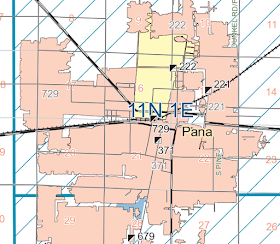Previous Bob Summers' comment
It appears the town also has a test plant for ICM, an ethanol plant equipment company.
The railroad was a Missouri Pacific branch. It is now part of the Kansas & Oklahoma Railroad.
 |
| Bob Summers posted Following up on my July 24 post and a historical review of our grain handling industry here in the hard red winter wheat belt, the Colwich branch of the former Andale Farmers Co-op is about 10 miles or so from Andale Kansas. Being a branch location, it is about half the capacity of the main location with the two working houses built about the same time as those at Andale, but they did not need the space here the annexes provided at the main location. As mentioned previously, harvest in the early days was slow and drawn out. It was prudent to ship the grain as it was received so the local elevator would be able to sell the grain as their customers sold it to the elevator. Typically, since some wheat is sold as harvested to meet harvesting expenses, the market is a little lower then, so most producers will sell only what they have to, then wait for higher prices later in the season. The railroads in the very early days put a "transit provision" in the freight rates whereas they collected a significant portion of the thru rate to final destination, either to domestic mills or export, on the first leg of the haul to a "terminal" market. Then when the grain was marketed and shipped to the final destination they would collect the balance, which would vary depending on the actual final destination. The railroads, most of which had invested heavily in building branch lines, were operating on the premise that once they had the first leg of the shipment on the books, they had locked in the business. In upcoming posts I plan to discuss what has changed in the last 30 or so years, and how that has influenced what we now see as we are photographing the "prairie castles" we have today. |








































.jpg)











